Design and dance collide in a new performance installation at the Barbican Centre
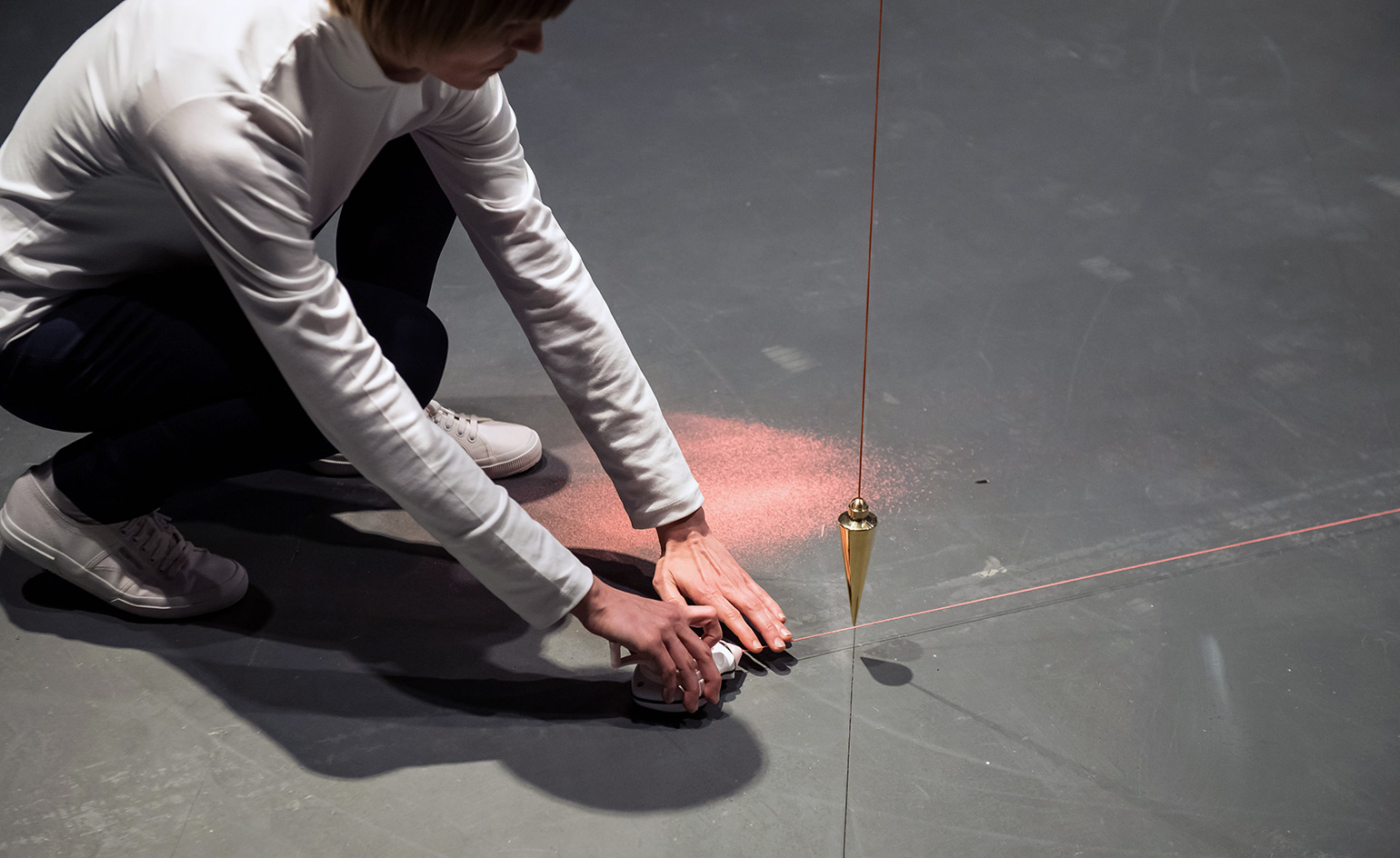
Aby Warburg's art theory epic Mnemosyne Atlas isn't the top of most people's reading list. Thankfully, it was at the top of artist Jeremy Millar's. When he mentioned it to choreographer Siobhan Davies, she revisited the Atlas' colourful pages, and was moved to use them as the basis for her latest performance.
Held in The Curve gallery, which arches around the Barbican Centre's ground floor, the exhibition draws on Warburg's practise of collecting symbolic images from different times and places, discovering hidden connections between them. Davies applies this idea by linking the work of an eclectic bunch of contemporary artists and performers, including Millar, conceptual artist Efrosini Protopapa, and London-based design duo Glithero. The performance is an extension of Davies' contribution to Doug Aitkin's epic 'Station-to-Station: A 30-Day Happening' which took place at the Barbican in the summer of 2015.
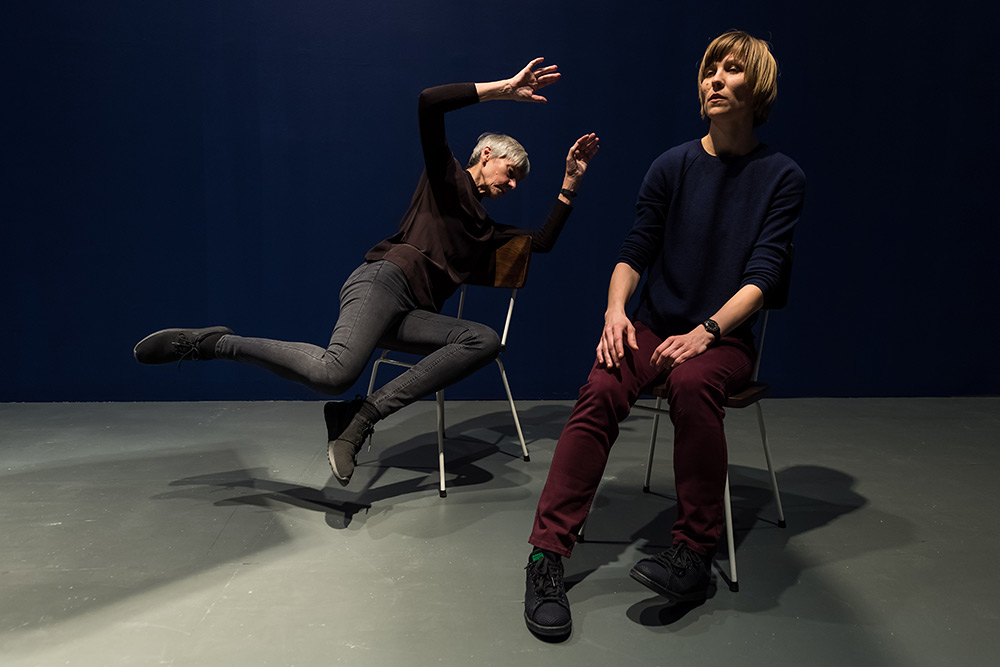
Siobhan Davies Dance material rearranged for the Barbican's Curve gallery.
Davies was keen to discover how a group of artists could interact within the same space. 'This is why I wanted artists of different disciplines to work together,' she explains. 'I wanted us to inhabit a gallery, making choices, while allowing the audience to make their own choices too.'
Indeed, the audience can move and interact in whichever way they please - in shoulder-brushing proximity to the dancers. Dressed in everyday clothes, the dancers blend into the audience, before slipping into abstract flourishes of movement. They manoeuvrer between screens and movable walls, upon which a live-stream of films and photographs of the dancers are projected. These screens serve to divide the curved gallery, making the audience curious to see what's happening concurrently, just around the corner.
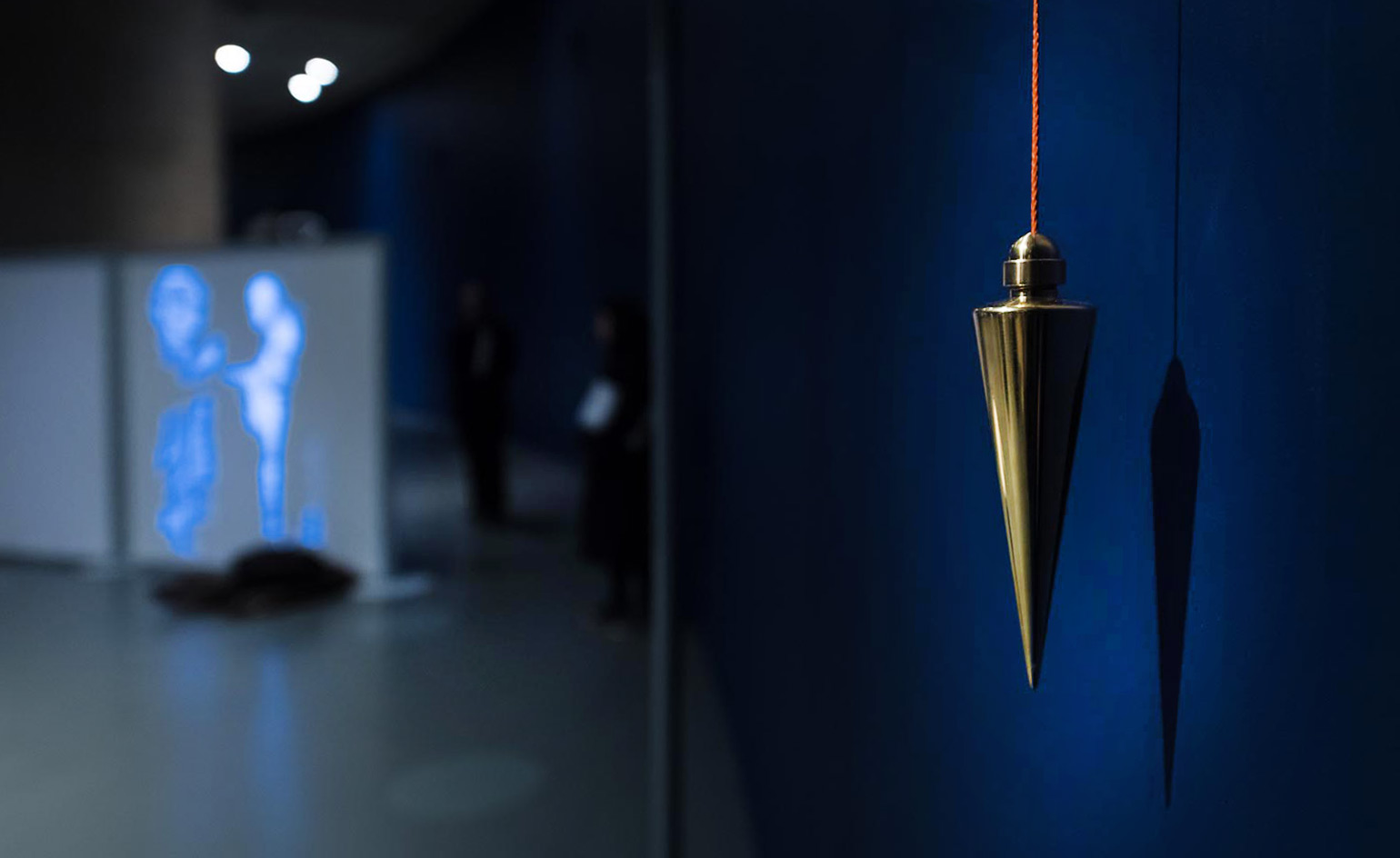
Installation view of ’Datum’, by Glithero, 2017.
Tim Simpson and Sarah van Gameren of Glithero open and close the show with their 'plumb bobs' - created specifically for the installation. These weighted, tapered silver ornaments are suspended from the ceiling by string, causing a pendulum-like focal point for the dancers to work around, enhanced by a moody, metronomic backing track. Davies explains how keen she was to have the duo on board. 'They're an extraordinary pair,' she says. 'They see dancing as drawing.'
But here they decided to take it one step further still. They said, 'why not literally make a mark in the space?' In response to this, Davies and her dance partner delicately skirt across the gallery's curved wall, tracing a parabolic line of chalk on the floor as they go. Although you don't realise it until the end, the two pendulums are being visually linked by this dusty line. The result is intriguingly therapeutic.
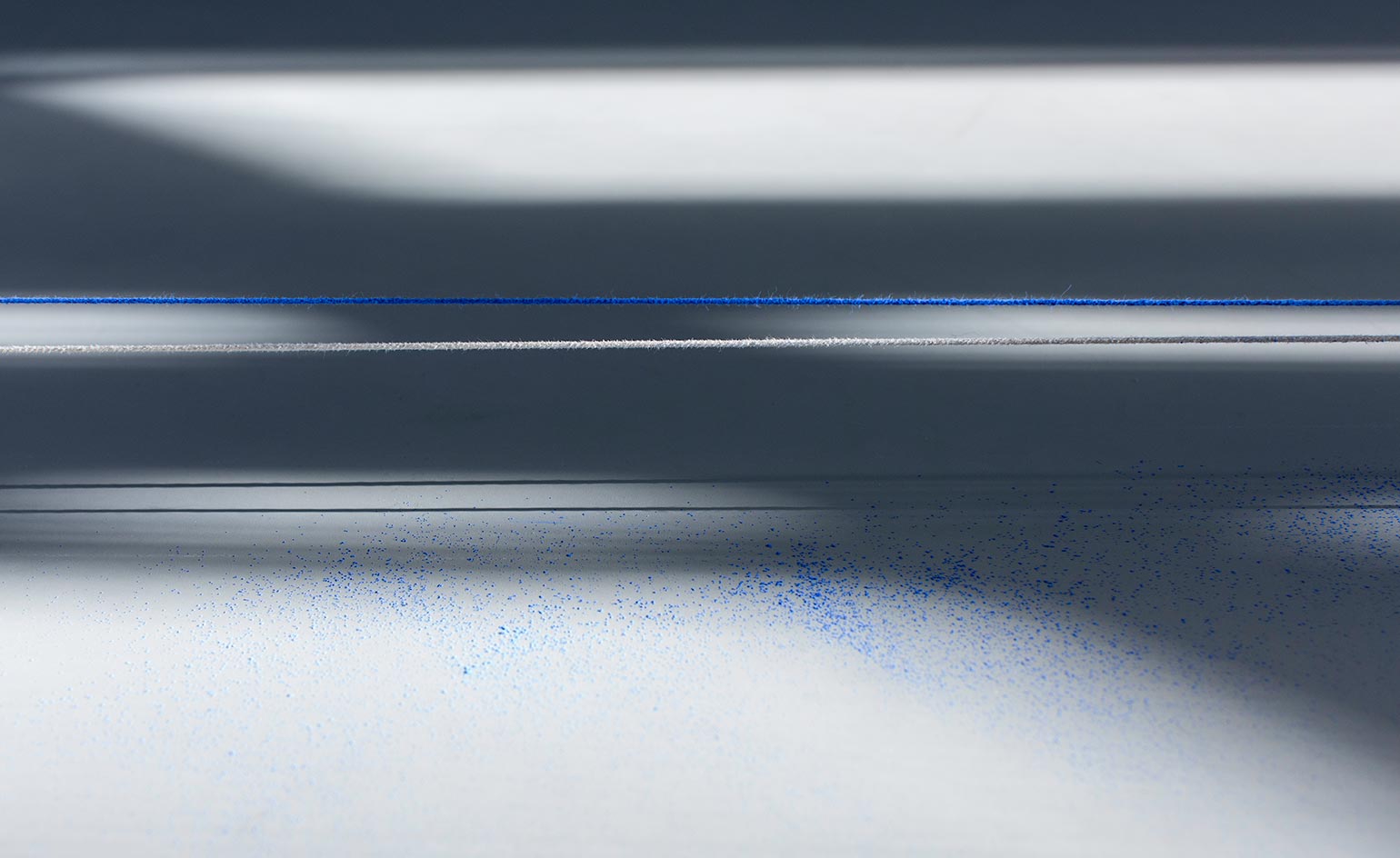
’Datum’, by Glithero, 2017.
In an age when we're seeing a lift in the quality of design-dance collaborations (think Wayne McGregor, OMA and Rick Guest) Glithero's intimate partnership with Davies provides a unique perspective on the way performance and design can merge. When Davies was asked why she thought contemporary design was becoming increasingly integrated with dance, she replied, 'Why ever not?'
Wallpaper* Newsletter
Receive our daily digest of inspiration, escapism and design stories from around the world direct to your inbox.
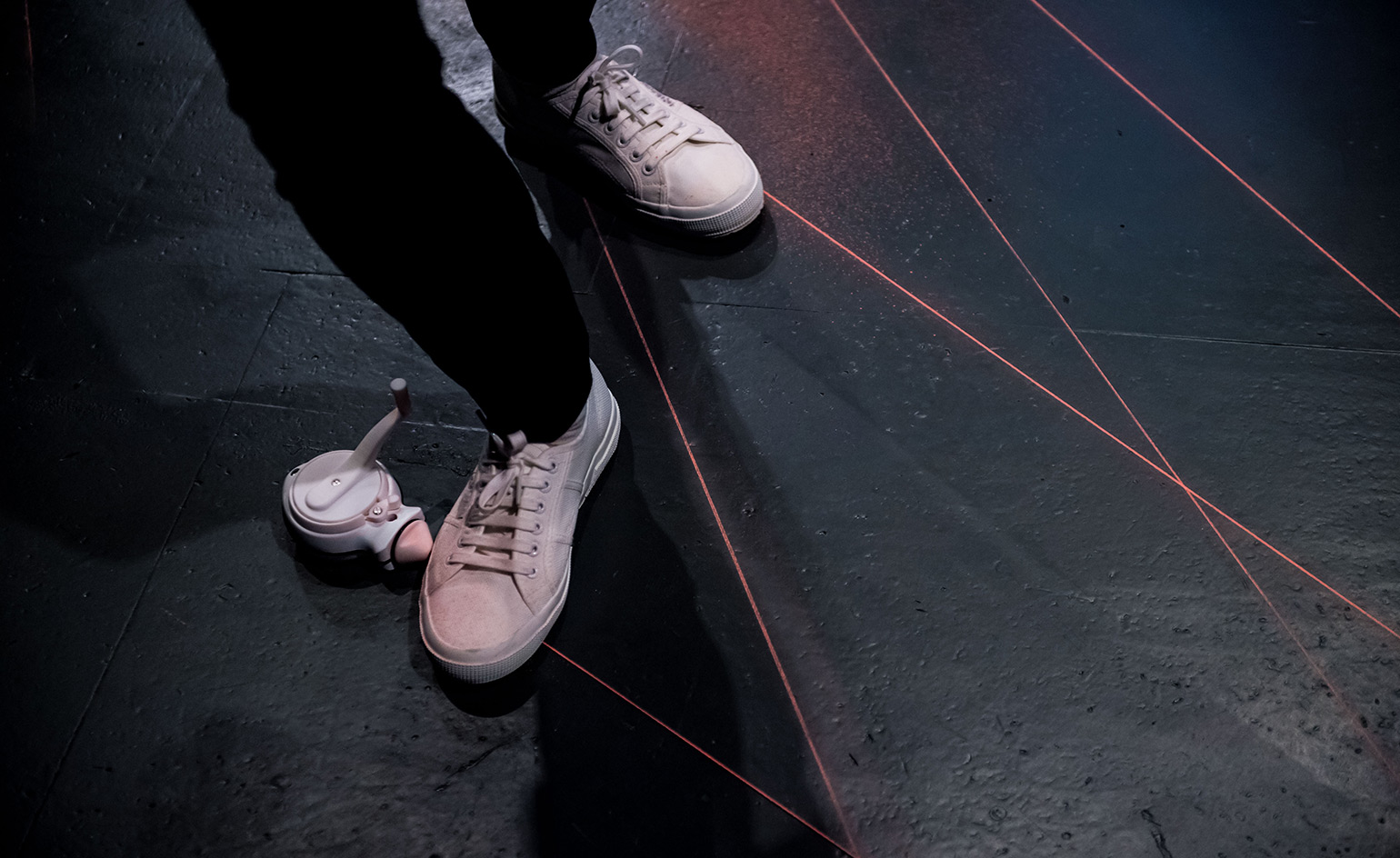
The dance company has rearranged material especially for The Curve gallery. In one performance, dancers trace a parabolic line of chalk on the floor as they move through the space
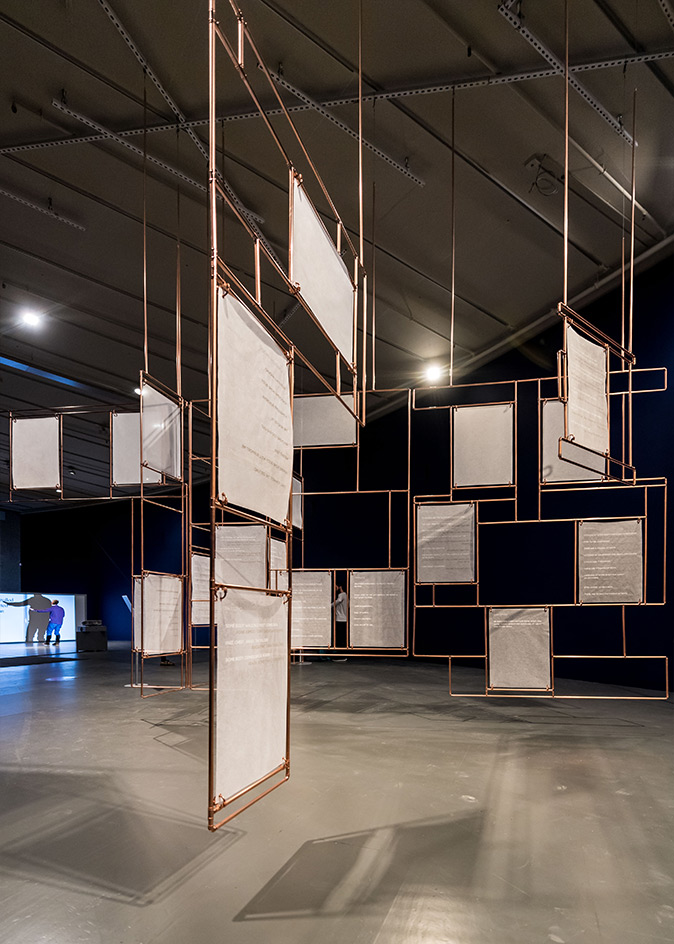
Installation view of I+I Variations on Alteroception, by Emma Smith, 2017.
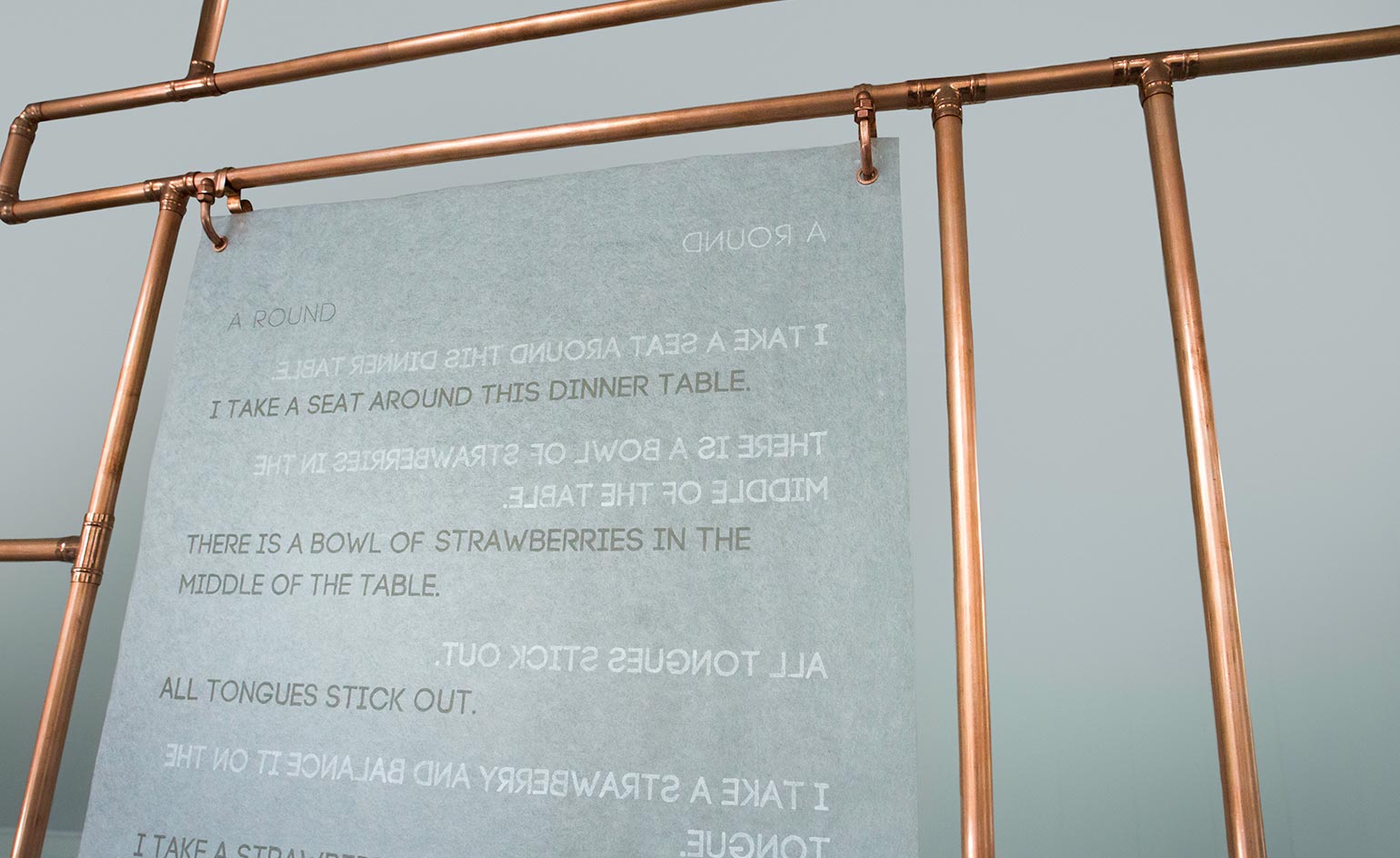
Detail of I+I Variations on Alteroception, by Emma Smith, 2017.
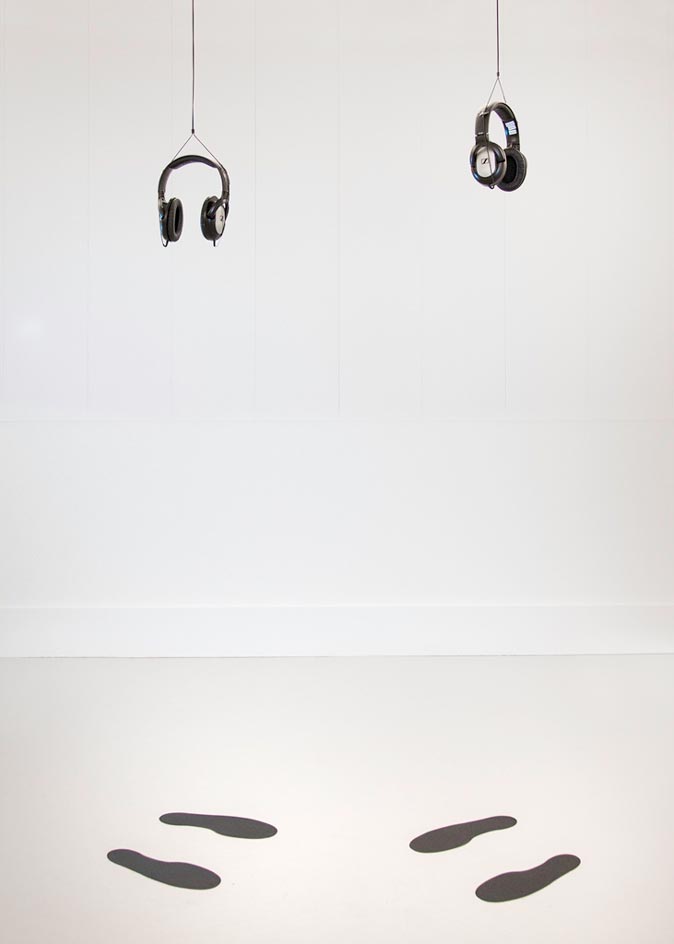
Disputatio II, by Efrosini Protopapa
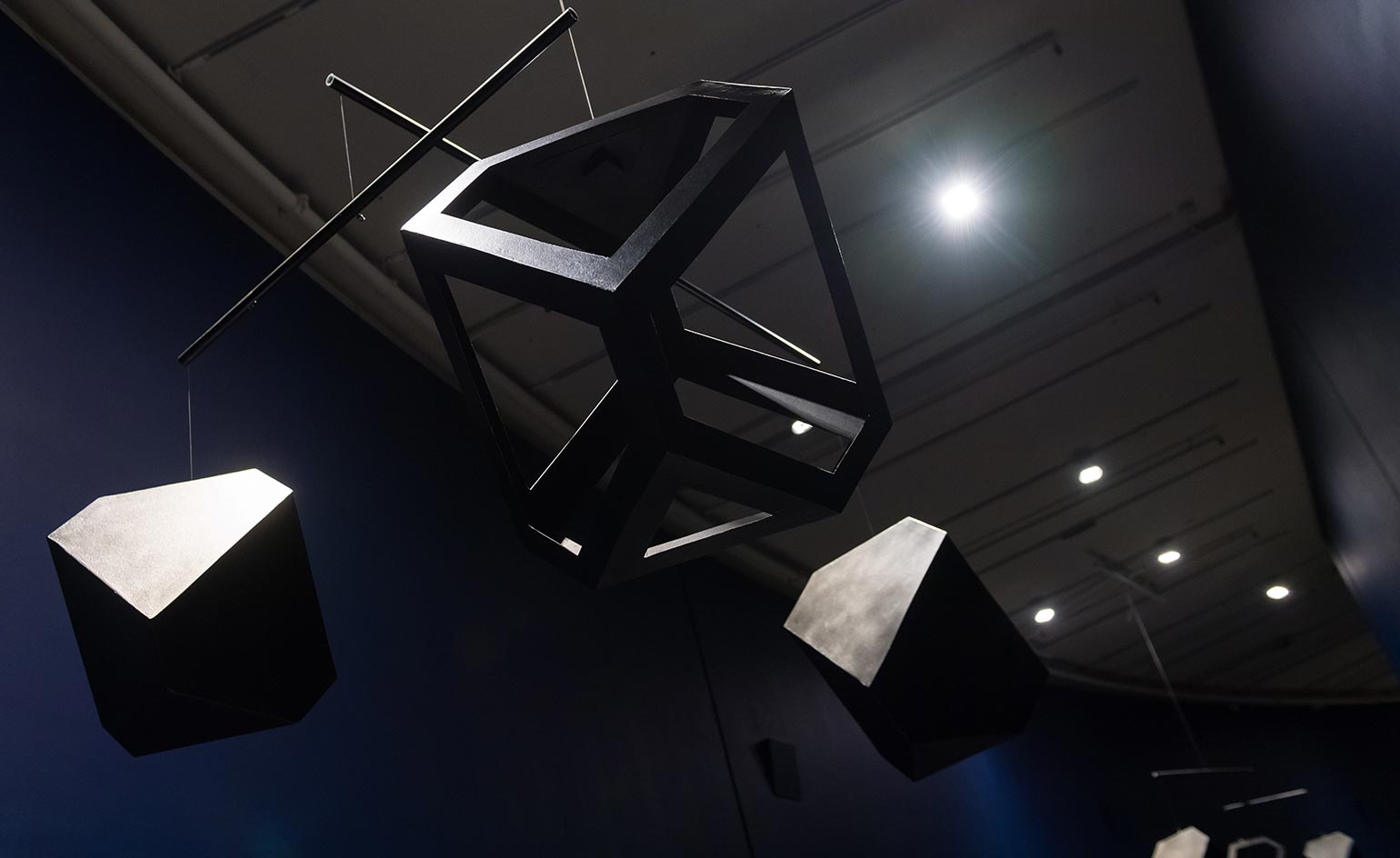
Installation view of Melancholy Mobiles, by Jeremy Millar
INFORMATION
’material / rearranged / to / be’ is on view until 28 January. For more information, visit the Barbican website
ADDRESS
The Curve
Barbican Centre
Silk Street
London EC2Y 8DS
Elly Parsons is the Digital Editor of Wallpaper*, where she oversees Wallpaper.com and its social platforms. She has been with the brand since 2015 in various roles, spending time as digital writer – specialising in art, technology and contemporary culture – and as deputy digital editor. She was shortlisted for a PPA Award in 2017, has written extensively for many publications, and has contributed to three books. She is a guest lecturer in digital journalism at Goldsmiths University, London, where she also holds a masters degree in creative writing. Now, her main areas of expertise include content strategy, audience engagement, and social media.
-
 All-In is the Paris-based label making full-force fashion for main character dressing
All-In is the Paris-based label making full-force fashion for main character dressingPart of our monthly Uprising series, Wallpaper* meets Benjamin Barron and Bror August Vestbø of All-In, the LVMH Prize-nominated label which bases its collections on a riotous cast of characters – real and imagined
By Orla Brennan
-
 Maserati joins forces with Giorgetti for a turbo-charged relationship
Maserati joins forces with Giorgetti for a turbo-charged relationshipAnnouncing their marriage during Milan Design Week, the brands unveiled a collection, a car and a long term commitment
By Hugo Macdonald
-
 Through an innovative new training program, Poltrona Frau aims to safeguard Italian craft
Through an innovative new training program, Poltrona Frau aims to safeguard Italian craftThe heritage furniture manufacturer is training a new generation of leather artisans
By Cristina Kiran Piotti
-
 ‘Humour is foundational’: artist Ella Kruglyanskaya on painting as a ‘highly questionable’ pursuit
‘Humour is foundational’: artist Ella Kruglyanskaya on painting as a ‘highly questionable’ pursuitElla Kruglyanskaya’s exhibition, ‘Shadows’ at Thomas Dane Gallery, is the first in a series of three this year, with openings in Basel and New York to follow
By Hannah Silver
-
 The art of the textile label: how British mill-made cloth sold itself to Indian buyers
The art of the textile label: how British mill-made cloth sold itself to Indian buyersAn exhibition of Indo-British textile labels at the Museum of Art & Photography (MAP) in Bengaluru is a journey through colonial desire and the design of mass persuasion
By Aastha D
-
 Artist Qualeasha Wood explores the digital glitch to weave stories of the Black female experience
Artist Qualeasha Wood explores the digital glitch to weave stories of the Black female experienceIn ‘Malware’, her new London exhibition at Pippy Houldsworth Gallery, the American artist’s tapestries, tuftings and videos delve into the world of internet malfunction
By Hannah Silver
-
 Ed Atkins confronts death at Tate Britain
Ed Atkins confronts death at Tate BritainIn his new London exhibition, the artist prods at the limits of existence through digital and physical works, including a film starring Toby Jones
By Emily Steer
-
 Tom Wesselmann’s 'Up Close' and the anatomy of desire
Tom Wesselmann’s 'Up Close' and the anatomy of desireIn a new exhibition currently on show at Almine Rech in London, Tom Wesselmann challenges the limits of figurative painting
By Sam Moore
-
 A major Frida Kahlo exhibition is coming to the Tate Modern next year
A major Frida Kahlo exhibition is coming to the Tate Modern next yearTate’s 2026 programme includes 'Frida: The Making of an Icon', which will trace the professional and personal life of countercultural figurehead Frida Kahlo
By Anna Solomon
-
 A portrait of the artist: Sotheby’s puts Grayson Perry in the spotlight
A portrait of the artist: Sotheby’s puts Grayson Perry in the spotlightFor more than a decade, photographer Richard Ansett has made Grayson Perry his muse. Now Sotheby’s is staging a selling exhibition of their work
By Hannah Silver
-
 From counter-culture to Northern Soul, these photos chart an intimate history of working-class Britain
From counter-culture to Northern Soul, these photos chart an intimate history of working-class Britain‘After the End of History: British Working Class Photography 1989 – 2024’ is at Edinburgh gallery Stills
By Tianna Williams